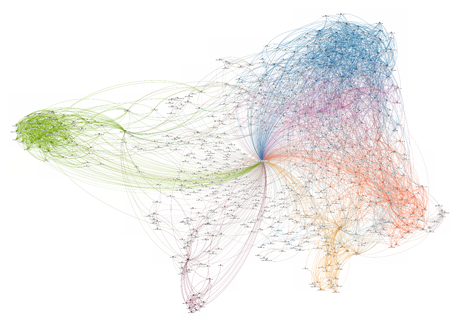One of the great challenges of knowledge work is in understanding how to integrate virtual tools into the oftentimes tricky realm of human communication and relationships. We take for granted that the constantly evolving toolset available to us is ultimately helpful to our productivity and ability to complete our day-to-day tasks. How did work ever get done without mobile phones and the constant stream of e-mail? But the techniques for binding it all together — the ways to manage our time and our attention in order to best take advantage of the digital without becoming a slave to it — are still largely undefined. How do we incorporate the oftentimes virtual, and sometimes real world interactions that now make up business and professional relationships? We may work far away from our colleagues, then have face-to-face meetings, then go back to working at a distance. Sometimes it feels like we've been thrust into the virtual world with no rules. Increasingly, it seems like it is the duty of knowledge workers to figure out just how we should relate to our digital workplace, and each other.
Within this chaotic sea of digital tools that we incorporate into our work lives, perhaps one of the more interesting ones is our professional social graph. With a virtual professional network, you can stay connected to business contacts over time, and potentially build these relationships for mutual benefit. The professional social graph is our virtual map of our career contacts and reflects our work lives through the relationships we've developed. LinkedIn, of course, is the most popular and prominent business network in the US, with roughly 90 million members, although others like Viadeo and XING have significant traction internationally.
Dunbar's Number and Ambient Awareness
Of course, your relationship with your virtual professional network can vary drastically depending on how many members it contains — at 10 or even 100 you may know everyone fairly well and be able to keep up with all their activities. But with 500 or 1,000 people, this becomes nearly impossible. Research by British anthropologist Robin Dunbar, conducted during the 1990s, suggests that humans have an upper limit to the number of people with whom they can maintain stable social relationships. Dunbar's number is 150, which seems to indicate that a massive virtual professional network may not be as valuable as we think. After all, if we're not really paying attention to one another, what's the point in being in contact at all? But Dunbar's number does not necessarily include all the lighter-weight connections that humans are capable of maintaining; those relationships that may not be persistent, but are still valuable — like the colleague we worked with two jobs ago or the client we haven't seen in a few years. In a large professional network, we may not be able to track the activities of these lighter-weight contacts in an active fashion, but we can piece together bits of info from the status updates we do see and have time to read. This peripheral understanding of ongoing activity in the network has been termed "ambient awareness" by some social scientists.
Visualizing Our Virtual Network
While having a limited view into the lives of those people with whom we have loose network connections might be valuable, the inverse might be equally so. Rather than a piecemeal understanding of individual activity, a broad view of our professional network of relationships and its ongoing evolution, can provide us with potential insights. It is with this thought in mind, that LinkedIn Labs created InMaps, a mapping software tool that allows you to see a beautiful visualization of your entire network and the connections that drive it. After you generate an InMap, within the universe of color-coded connections, you can begin to make out patterns of categories and sub-networks based on the relationship groupings that your professional connections have with each other. What insights can you gain from this relationship map beyond the sheer beauty and interest of the info visualization itself? If you've been a part of LinkedIn for awhile, and have a significant number of connections, each cluster represents a distinct time period in your professional history, the total picture in many ways representing the entirety of your work life.

InMap allows you to visualize your LinkedIn network connections.
The value of your extended virtual professional network — besides the more obvious opportunities for professional advice or assistance when it comes to finding a new job or gig — may very well be found in a new kind of connectedness that we're still in the midst of defining. Ambient awareness of your contacts activities, as well as the insights that come from a broad visualization of your network are just two manifestations of this. It's not hard to see how such understanding and awareness could result in a deeper appreciation of your own work life path. As we define our digital relationships and connections, we're also figuring out the way to better understand ourselves, a byproduct perhaps that we never would have expected.